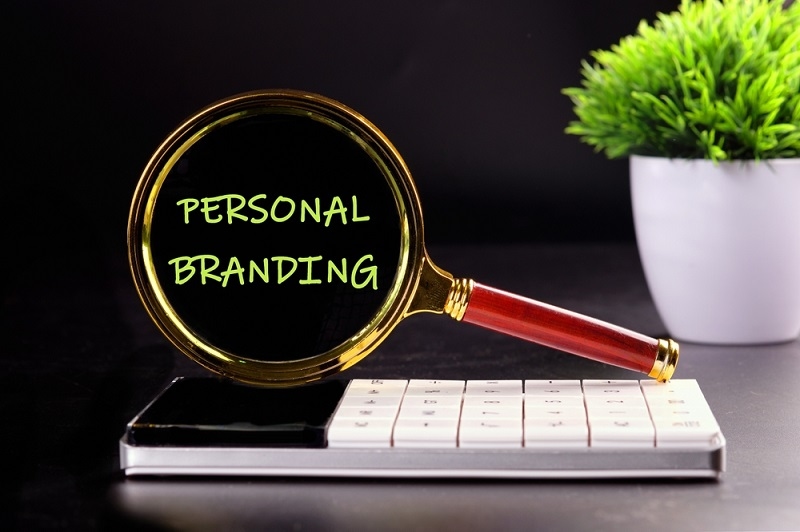
In the world of today, where competition is rife, it is more important than ever before to differentiate yourself. As a student, entrepreneur, who works or wants to work, personal branding may significantly influence your achievements. So, what is personal branding, and how would you go about doing this to enhance your career and help influence other individuals? Easy-going strategies and practical examples of personal branding will help you access a clearer path to personal branding in this blog.
Your style of presentation in society is personal branding. It is your credibility, morals, capabilities, and what you represent. When used properly, it creates credibility, thereby making people remember you.
The process of building a unique and consistent image or identity around oneself is what is termed personal branding. What comes to people's minds when they hear your name? This may include your skills, passions, personality, or even the tone of the emails you use and what you post on the internet.
A strong personal brand helps you:
When you take control of your brand, you become the voice of your career. Here's how it helps boost your professional life.
By sharing your knowledge and opinions consistently, people start seeing you as an expert. Over time, this builds a solid reputation that can lead to promotions, partnerships, or speaking invitations.
People want to work with those they trust and admire. With the right personal branding strategies, you can attract job offers, collaborations, and projects without even applying.
When you have a strong personal brand, you get noticed more easily, especially online. If someone searches your name, they’ll find your LinkedIn profile, blog, or other professional content, giving you a big advantage.
Developing your brand doesn’t have to be complicated. Here’s a simple guide on how to build a personal brand from scratch.
Start by asking:
These answers form the core of your brand.
Who do you want to influence? It could be:
Knowing your audience helps you craft the right message.
A personal branding statement is a short sentence that sums up who you are, what you do, and why you do it. For example:
“I help small businesses grow online through affordable and effective marketing.”
In today’s digital age, your online image matters a lot. Start by:

Social media is a powerful tool to shape and share your brand. Here’s how you can use different platforms to your advantage.
You don’t need to be everywhere. Choose platforms based on where your audience is:
Posting often helps keep you visible. Share content that aligns with your brand:
Don’t just post—interact! Comment on others’ posts, reply to messages, and build meaningful connections. This helps people remember you.
People connect with real people. Share your wins and losses, your opinions, and your personality. This builds trust and makes your brand relatable.
Let’s look at some real-life personal branding examples for inspiration.
Neil Patel is a well-known digital marketer. He built his brand by consistently blogging, speaking at events, and offering value-packed content. Now, people trust him as a go-to expert in SEO and marketing.
Marie Forleo is an entrepreneur and coach. Her brand is built around positivity, creativity, and confidence. Through her YouTube channel and social media, she motivates others and promotes her business.
Jay Shetty used storytelling and personal experience to connect with audiences. His brand focuses on mindfulness, and he uses videos and podcasts to share his message with millions.
To make your personal brand strong and sustainable, keep these personal branding tips in mind.
Use the same tone, colors, profile picture, and values across all platforms. This creates a unified and professional image. Consistency helps people recognize and remember you easily.
Stay updated in your field. Share what you learn. This shows growth and helps others grow with you. The more you learn, the more valuable your insights become to your audience.
Feedback from peers or mentors can help you improve your messaging and brand visibility. It also shows you're open to growth and willing to adapt.
Authenticity is key. Don’t try to be someone else. Focus on your real skills, experiences, and passions. Genuine personal brands build deeper, lasting connections with people.
Strategic planning can turn your efforts into results. Here are some smart personal branding strategies to apply.
Creating useful content regularly—like blogs, videos, or podcasts—builds your authority. Share what you know and help others solve problems. Over time, this content becomes a digital portfolio that showcases your expertise.
Speaking at events or hosting webinars positions you as an expert. It also allows you to reach a larger audience. These opportunities also enhance your confidence and public speaking skills.
Get yourself surrounded by like-minded professionals. Venture out to socialize, network, and partner with others in your niche.
Quantify the growth of your brand. Do you have more followers, job offers, or speaking invitations? Check what is working using the analytics.
Personal branding is not a fad value creation, something that you are doing because it's cool, but an investment in your future career and reputation. If you are a freelancer, a job seeker, or a business owner, your brand is an introduction to the rest of the world on who you are and why they ought to work with you. Take baby steps, be relentless, and be yourself. Use these tips, strategies, and examples of personal branding in the real world that you have read in this blog, and you will be well on your way to achieving more career success and influencing others. Keep in mind that people do not buy products or services, but they buy stories, values, and people. And when you also have a really good personal brand, then you are unforgettable.
This content was created by AI